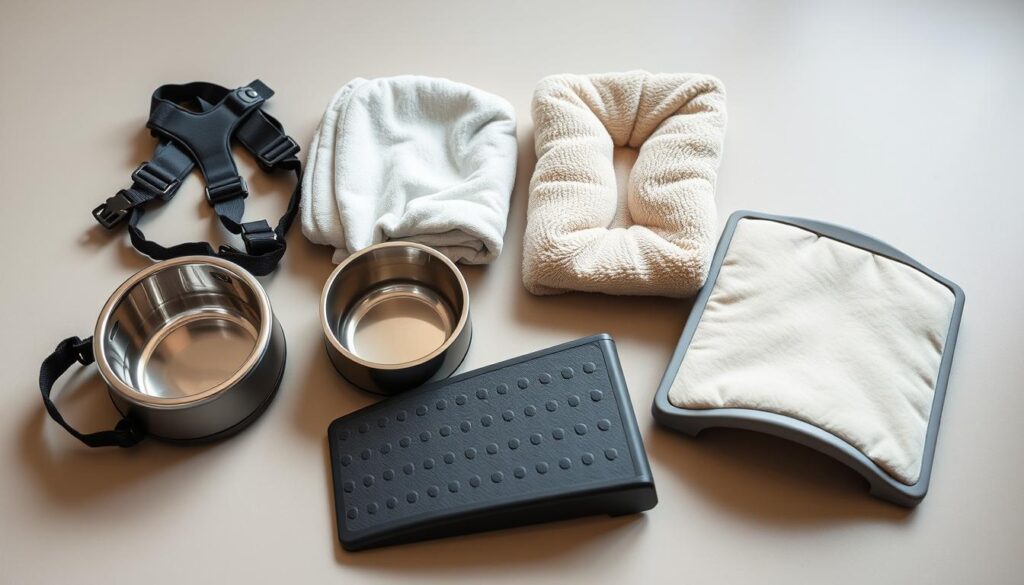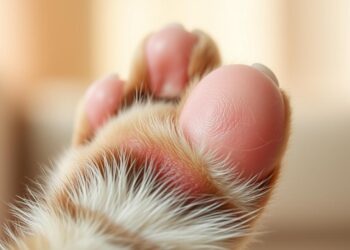Feline paralysis is a severe and sudden condition where a cat loses the ability to move parts of its body. This is considered a veterinary emergency requiring immediate attention.
Immediate veterinary care is crucial for the well-being of the affected animal. Understanding the basics of caring for a paralyzed cat can significantly impact the recovery process.
Knowing what to do and how to provide the necessary care and support can make a significant difference in the cat’s quality of life.
Understanding Feline Paralysis
The onset of paralysis in cats often signals a serious health issue, making it vital to explore the underlying factors. Feline paralysis can result from a variety of causes, and understanding these is crucial for providing the necessary care and support.
Common Causes of Paralysis in Cats
Paralysis in cats can stem from several sources, including traumatic injuries, herniated discs, and certain diseases. For instance, a cat that has experienced a traumatic injury may suffer from paralysis due to spinal cord damage. Similarly, conditions like intervertebral disc disease (IVDD) can lead to paralysis if not promptly and properly treated.
| Cause | Description | Potential Outcome |
|---|---|---|
| Traumatic Injury | Accidents or falls that damage the spinal cord | Temporary or permanent paralysis |
| Herniated Discs | Discs that bulge or rupture, putting pressure on the spinal cord | Paralysis, pain, and loss of bladder/bowel control |
| Diseases | Conditions such as cancer, infections, or inflammatory diseases affecting the spine or nervous system | Varies depending on the disease; potentially includes paralysis |
For cats experiencing paralysis, seeking paralyzed feline help is crucial. Owners can provide cat with paralysis assistance by ensuring their cat’s comfort and managing their condition effectively.
Types of Paralysis Your Cat May Experience
Cats can suffer from different types of paralysis, depending on the area affected and the severity of the condition. Paralysis can be classified as flaccid or spastic, with the former characterized by weak or floppy muscles, and the latter by stiff or spasmodic muscles.
Understanding the type of paralysis your cat is experiencing is vital for determining the best course of care. Providing paralyzed cat support involves adapting your care strategies to meet your cat’s specific needs.
Initial Veterinary Care and Diagnosis
When a cat is diagnosed with paralysis, the initial step involves a thorough veterinary examination to determine the underlying cause. This may include diagnostic tests such as X-rays, MRI, or CT scans to assess the condition of the spine and nervous system.
Prompt veterinary care is essential for addressing the root cause of paralysis and preventing further complications. By understanding the cause and type of paralysis, cat owners can work closely with their veterinarian to develop an effective care plan.
Essential Paralyzed Cat Care Techniques and Tips
To ensure the well-being of a paralyzed cat, it’s crucial to implement various care techniques that address their unique needs. Caring for a paralyzed cat involves a comprehensive approach that includes adjustments to their living environment, management of health issues, and the use of assistive devices.
Creating a Comfortable Living Environment
A comfortable living environment is vital for paralyzed cats. This includes providing a warm, quiet space with easy access to food, water, and litter facilities. Orthopedic beds or heated beds can be particularly beneficial in alleviating discomfort and preventing pressure sores.

Managing Bladder and Bowel Functions
Paralyzed cats often experience difficulties with bladder and bowel management. Regular expression of the bladder and manual stimulation of bowel movements may be necessary. It’s essential to work closely with a veterinarian to develop a routine that meets the cat’s specific needs.
Preventing Pressure Sores and Maintaining Hygiene
Preventing pressure sores is critical for paralyzed cats, as these can lead to serious infections. Regular repositioning, gentle massage, and keeping the cat clean and dry are essential practices. Using cat mobility aids can also help in reducing pressure on sensitive areas.
Mobility Aids and Assistive Devices
Paralyzed cat products such as wheelchairs and harnesses can significantly improve a cat’s mobility and quality of life. These devices help in maintaining muscle tone and preventing further complications associated with paralysis.
| Assistive Device | Benefits | Considerations |
|---|---|---|
| Wheelchairs | Improves mobility, maintains muscle tone | Proper fitting, regular maintenance |
| Harnesses | Supports mobility, aids in physical therapy | Comfort, adjustability |
| Orthopedic Beds | Reduces pressure sores, enhances comfort | Material, size, heating options |
Effective paralyzed cat treatment involves a combination of veterinary care, lifestyle adjustments, and the use of appropriate assistive devices. By understanding and implementing these care techniques, cat owners can significantly enhance their pet’s quality of life.
Conclusion: Long-Term Outlook for Cats with Paralysis
Caring for a paralyzed cat requires dedication, patience, and the right resources. With proper care and attention, paralyzed cats can lead happy and fulfilling lives. By understanding the causes of feline paralysis, creating a comfortable living environment, and managing bladder and bowel functions, cat owners can significantly improve their pet’s quality of life.
For cat owners seeking additional support, various paralyzed cat resources are available. Organizations and online forums provide valuable information, guidance, and community connections. By leveraging these resources and practicing effective paralyzed cat care, owners can help their pets thrive despite physical limitations.
Ultimately, the long-term outlook for cats with paralysis is positive, with many cats adapting to their condition and living comfortably with the right care and support.







